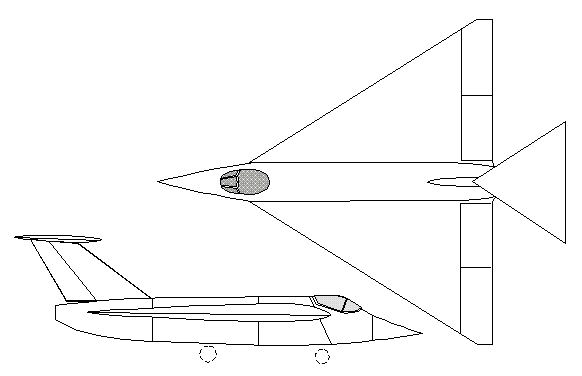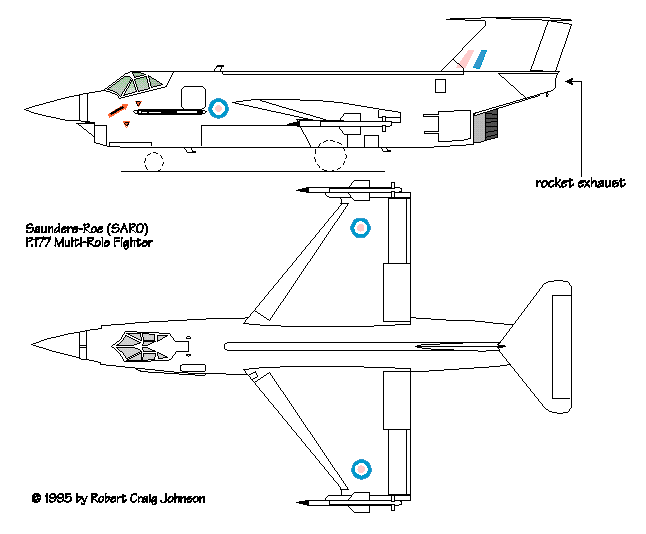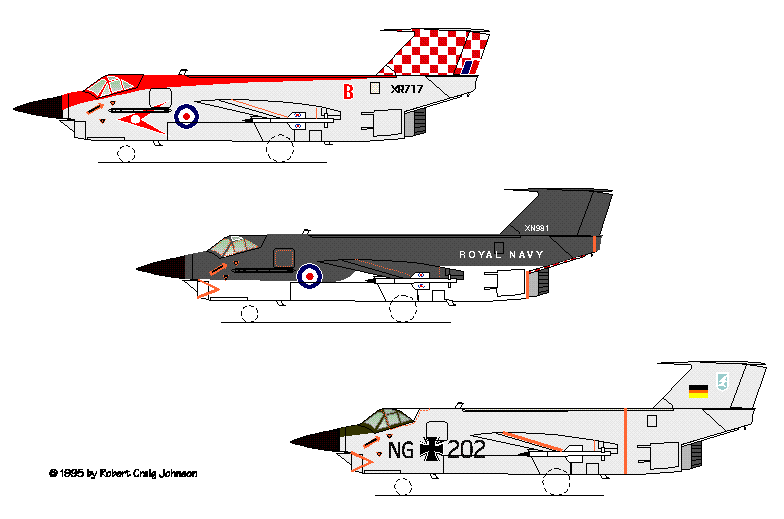
In 1957, the Federal German Luftwaffe decided to replace its first-line fighter, the F-86 Sabre, with a supersonic, multirole airplane. Eventually, this modest requirement would balloon into one of the biggest military procurement programs of all time, the complete re-equipment of NATO's non-US, non-UK air forces with a single, common type. In the end, Lockheed overcame all opposition to its Starfighter (allegedly by being very free with bribes). But in the beginning, the odds-on favorite and front-runner was a very different aircraft, the Saunders-Roe (SARO) P.177, an unusual rocket/turbojet hybrid from a now all but forgotten manufacturer of flying boats based, of all places, on the Isle of Wight.
Nazi Germany's rocket-propelled Me 163 point-defence interceptors made a deep impression on Britain's air staff, an impression out of all proportion to the actual merits of the concept. In the 1950s, turbojets still suffered from many of the ills that plagued them during the war years: slow acceleration, poor initial rate of climb, relatively low thrust-to-weight ratios, and combustion difficulties at high altitudes. Afterburners were still in their infancy, particularly in Britain (the first afterburner to grace a British-designed engine was designed and built in Sweden, by Volvo Flygmotor, for the Rolls-Royce Avon used in the SAAB J35). Fast, high-flying, nuclear-armed Russian heavy bombers were expected at any time. Under the circumstances, the light, fantastically high-thrust rocket engine seemed like a godsend.

At first, the RAF envisioned their maximum performance interceptor as a pure rocket airplane, like an Me 163 but with substantially more fuel. It would be armed with a battery of rockets that would be salvoed in a single firing pass. This concept proved impractical. The winning design, Short's PD.7 project, was almost a flying fuel tank. Every possible nook and cranny was filled with fuel or oxidizer. Yet calculations showed it to be still impossibly short on range. It could reach a bomber that passed conveniently close to its base at almost any altitude. But it could not fly out of its way or stop a cruise-missile carrier before the latter could launch its weapons. Pilots were also less than enthusiastic about the idea of routine, nose-high, dead-stick landings in a delta-winged flying fuel tank full of explosive fumes.
At this point, Saunders Roe, a small firm known mostly for small production batches of maritime utility aircraft, suggested a novel, mixed power arrangement. Rockets had been combined with jets during the Second World War, notably on the experimental Me 262C. But, in this application, the Walther rocket engine had been an auxiliary powerplant for boosting the JUMO 004 turbojet's modest climb performance. The SARO concept was different. Like the pure-rocket PD.7, the proposed SARO SR.53 would have a rocket, the de Havilland Spectre, for its main, combat powerplant. But it would also carry a small turbojet designed originally for disposable target drones, the Armstrong-Siddeley Viper. The Viper would serve as a sustainer engine during cruise and recovery. It was compact and very light, yet it was cleared for long-life service use at 1640 lb-st.
The SR.53 had a tiny, mid-mounted, cropped delta wing, a T-tail, flush, side-mounted air inlets for the jet, and a ventral nozzle for the Spectre. It could carry two de Havilland Firestreak infrared-guided air-to-air missiles on the wingtips. It weighed about 15,000 lbs, spanned 25 ft, and was 45 ft long. Two were built, and flight tests began in spring, 1957. These revealed that the aircraft performed pretty much as predicted. Forty-two flights were made before a fatal accident and a growing lack of interest by the RAF led to the grounding of the remaining aircraft. (Modeler's note: MPC marketed a 1/72-scale model kit of the SR.53 in the late 1960s or early '70s.)
Bracket creep killed the SR.53. It met the original, target-defence specification to a T. But the air staff had, in the meantime, decided that the new fighter had to have an all-weather radar set. The aerodynamicists at Farnborough wanted a bigger jet engine, better matched to the airframe's ideal, crusing Mach number. The rocket could then be optimized for maximum turn, climb, and speed performance. They felt that the turbojet should be a supersonic engine in the 7,000-8,000 lb-st class. The rocket boffins wanted a different rocket motor, one that burned its kerosene (i.e. jet fuel) with familiar, readily available (though dangerous) liquid oxygen rather than the Spectre's exotic, high-test hydrogen peroxide (HTP). As new requirements piled up on top of old ones, size and weight grew. The chance for an early production contract for the SR.53 evaporated.

SARO had an up-market, replacement airplane waiting in the wings, the SR.177. It combined the basic wing and tail design of its light-weight predecessor with a rather different fuselage. The rocket was now mounted above the turbojet immediately below the rudder. The turbojet was an 8000-st de Havilland Gyron Junior fed via a variable-geometry chin inlet optimized for supersonic speeds. The wings were substantially larger and incorporated blown flaps. For safety reasons, SARO stuck with the HTP/Kerosene Spectre rocket.
The SR.177 now began to attract considerable attention overseas. The United States backed the development program with off-shore procurement funds. The RAF, the Royal Navy, and the Luftwaffe were expected to place it in widespread service starting in the late 'Fifties and early 'Sixties. Armstrong Whitworth was brought into the program as the actual manufacturing contractor. SARO's facilities at Cowes, Isle of Man, were simply too small and antiquated for the volume production envisaged. By 1955, 70% of the production tooling was in place.

At this point, the English Defence Minister, Duncan Sandys, issued the famous White Paper that cancelled almost every British aircraft development program in favor of guided missiles. The Royal Navy and German orders suddenly had to support the whole program. Then the Navy backed out as well. Even so, the government remained naively optimistic about the continued prospect of foreign orders. Shortly after the head of government had publicly declared airplanes obsolete, the Ministry of Supply announced funding five prototypes of the SR.177 against the anticipated German requirement. But the Luftwaffe's perceived needs were also now changing. It now wanted a low-level, nuclear-armed strike fighter rather than a high-altitude interceptor. SARO had to hurriedly re-stress and redesign for the new role. Typically, Rolls-Royce confused matters still more by convincing the Germans that their own RB.153 was far superior to the de Havilland engine SARO had selected. More redesign ensued.
Heinkel A.G. Began preliminary negotiations for a production license in fall, 1955. But it was all for nought. Once it became clear that Britain would buy no SR.177s for the RAF and RN, the Germans cancelled the order and turned elsewhere. Spares, support, and overall program costs were simply too uncertain without the full backing of Her Majesty's Government. By the end of 1955, the SARO 177 was a dead letter. Germany bought the Starfighter in what would soon be known as the "Deal of the Century."
© 1996 by Robert Craig Johnson. Part of a series first published in Eagle Droppings, the Newsletter of the Rocky Mountain Chapter, IPMS/USA.